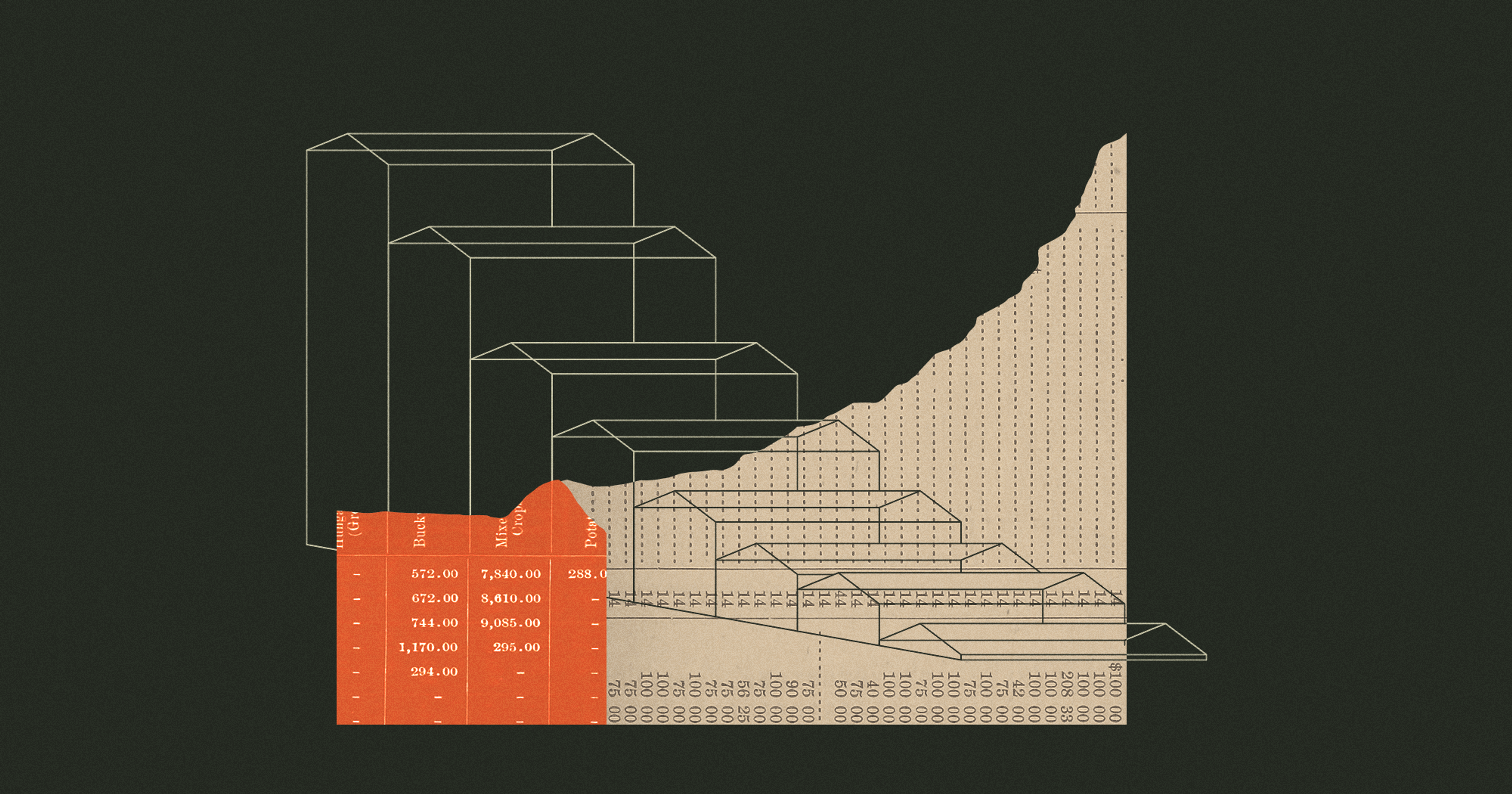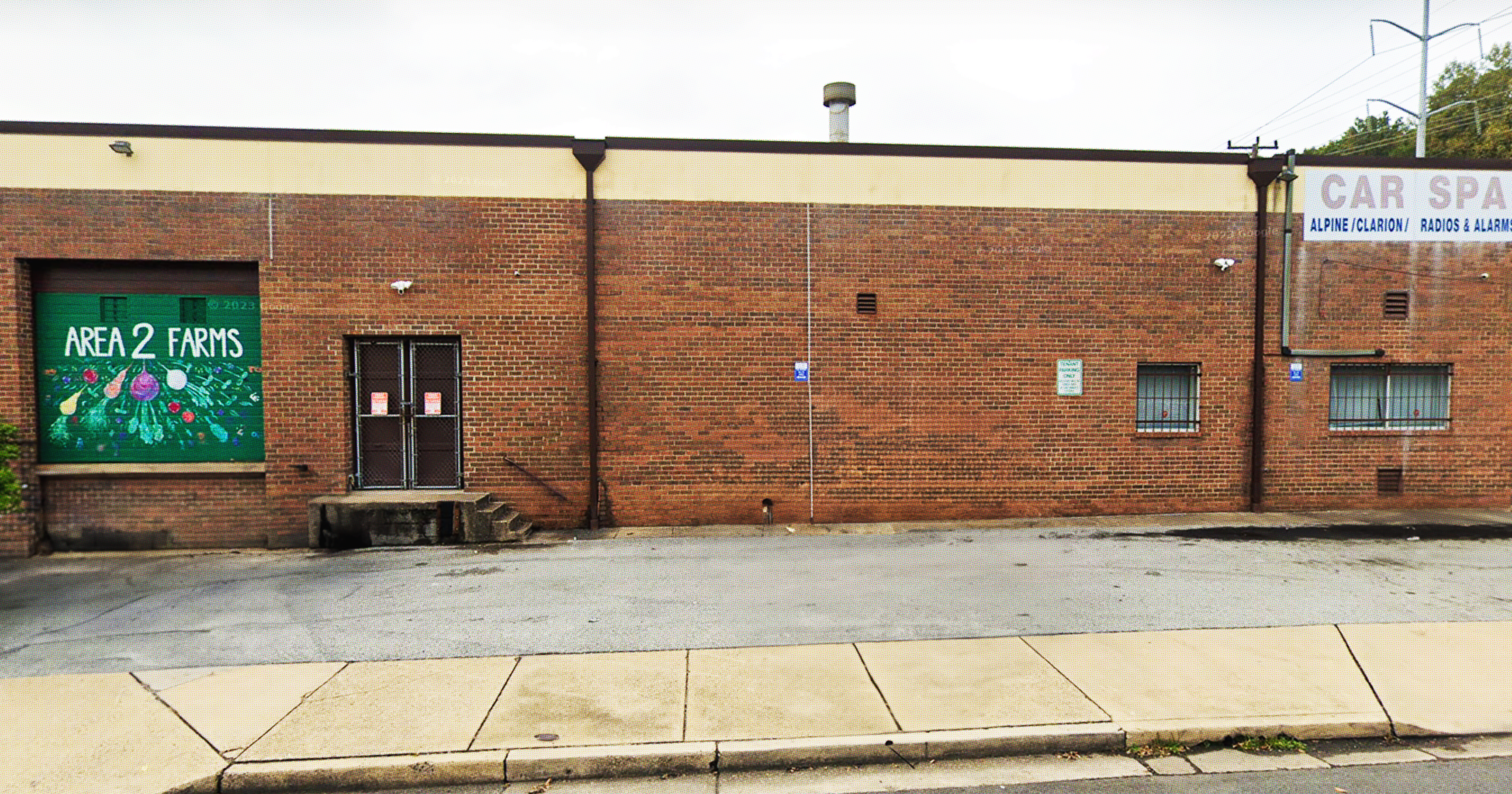Investors went wild for the utopian promise of tech-driven vertical farming. Now the industry is on the brink of collapse — can it survive by following in traditional agriculture’s footsteps?
In June, AeroFarms, perhaps the most famous indoor agriculture grower in the world, filed for Chapter 11 bankruptcy after 20 years in business. Six weeks later, creditors and competitors made their bids for what remained of another vertical farming giant, AppHarvest: three mega-greenhouses, equipped with artificial intelligence and robotics, were on the auction block. The two companies were previously industry giants, operating nine industrial-scale farms between them, having received nearly $400 million in total funding ($238 million for AeroFarms alone).
It was a sharp turn for two darlings of what seemed to be an indoor growing revolution, promising year-round fresh, local produce, free from the perils of winter and climate change. Now, they’re just the latest casualties of an industry in decline.
A tumultuous two years of rising energy prices and interest rates inevitably led to widespread layoffs, shuttered facilities, plummeting stock prices, and bankruptcies. Meanwhile, the excitement of the indoor growing boom has quelled; venture capital investment at the beginning of 2023 fell 91 percent compared to last year. Vertical farms and greenhouses are now strapped for cash, competing over extremely limited available capital.
But on a deeper level, experts say, the struggles across indoor agriculture point to major identity issues. Many indoor ag companies were pitched, funded, and run as tech companies, which ultimately got them the money they needed. But that money came with venture capital expectations — essentially, the ability to reach full capabilities fast while making huge amounts of cash in the coolest-sounding way possible.
What Happens When Farms Become Startups?
To some degree, idealism is what initially made indoor growers attractive to investors. Their pitch: to transform the world’s oldest industry, to grow food locally, to shorten and secure the supply chain. And at the time there was plenty of money to go around. But that money inevitably came with strings attached.
Indoor ag supplier Tim Higgins said venture capital brings costs to a farming business — which notoriously run on razor-thin margins, if there’s profit at all — that wouldn’t normally be there: namely, C-suites and attorneys.
“You cannot just use fancy technology without making the product more attractive.”
Many indoor growers use as much as 80 percent of their budget for R&D and flashy production lines, according to Shamim Ahamed, who runs the Controlled Environment Engineering Lab at the University of California, Davis. “You cannot just use fancy technology without making the product more attractive,” he said. Just like new tractors and irrigation systems don’t sell more produce, Higgins added, consumers are unlikely to care deeply about whether lettuce was grown inside or out.
VCs were “starry-eyed” about the prospect of disrupting a very important industry, said Ari Ginsberg, professor of entrepreneurship at New York University who studies VC trends. Enthused and flush with cash, VCs were bought in. But “they didn’t do their homework on the economics and how long it would take [to reach profitability],” he said.
When the capital was abundant, high-tech growing systems and large executive teams weren’t a problem. But no one, indoor growers nor VCs, anticipated the economic downturn, Ginsberg said. “VCs in general have pulled back and are demanding more resilient business models,” he said.
Growing Tomatoes on a Tech Timeline
Though they maintained very different business models, both AeroFarms and AppHarvest pointed to unsustainable expenses as a reason for their bankruptcy filings. AeroFarms was doling out a substantial R&D budget to study high-value crops and sustain a research facility in Abu Dhabi. AppHarvest built four high-tech greenhouses — 165 acres under glass — in a three-year span.
To industry insiders, neither filing was a surprise. AeroFarms called off a SPAC deal, which would have eventually taken the company’s shares public, in 2022. Meanwhile, AppHarvest’s Q3 2022 earnings disclosed that the company had only $36 million on hand, alongside a $270 million deficit. Leadership reported “substantial doubt” about the company’s ability to continue.
“The primary issue was ramping up production and revenue across the four-farm network quickly enough to become self-sustaining,” AppHarvest communications officer Travis Parman said. It was a challenge made all the more difficult as available capital decreased and interest rates increased, he said.
To their credit, AeroFarms and AppHarvest were up against really tough odds, said Tom Stenzel, produce industry veteran and executive director of the CEA Alliance, a trade association for controlled indoor farming. “Anybody who knows ag knows it’s a long haul.” But most investments in indoor growing weren’t from the agriculture sector.
“It’s too much short-term thinking, and agriculture isn’t a short-term game.”
“In North America, if you can’t show a 3- to 5-year ROI no [VCs] will invest in you,” Higgins said. So the strategy for many startups has been to grow large and fast to make that five-year timeframe. By contrast, the financing for successful high-tech greenhouses in the Netherlands, which served as models for AppHarvest, was based on a substantially longer 10-year ROI, Higgins said.
More time could have made a difference for AppHarvest, Parman agreed. But not just time. Without more funding, the company had no way to remain operational, let alone become profitable.
Unfortunately, there’s a lot of emotion at play, according to Leo Marcelis, a vertical farming expert at Wageningen University in the Netherlands. “Where the investors were first too optimistic, now they are too pessimistic.” It’s too much short-term thinking, and agriculture isn’t a short-term game, he said.
But that’s the nature of venture capital, according to Ginsberg. Indoor ag’s boom and bust is not unlike the dot com bubble of the early 2000s. VCs were infatuated with the future while entrepreneurs were “overly optimistic about the amount of time it’s going to take to get there,” he said.
And venture capitalists don’t really have more time because their own financial backers are looking for quick and exceptional returns. They need to make an exit in five to six years, Ginsberg said. Indoor growers weren’t yet ready to “move at the pace that [VCs] need them to,” he added.
Back to Basics
At the two-and-a-half day Indoor Ag-Tech Innovation Summit this summer, Stenzel witnessed an industry shift. Instead of tech innovation, presentations and conversations revolved around good economics. The key message was shockingly simple: The indoor growing industry should focus on growing produce and being profitable — the core business of farming. “It was funny,” Stenzel said.
While it’s unlikely indoor farming will ever keep pace with Silicon Valley, experts say this form of agriculture can still be a viable, even profitable option — as long as expectations are set appropriately.
Even AppHarvest and AeroFarms are not entirely done. AeroFarms used a restructuring tactic to exit bankruptcy; an investor purchased the company’s newest indoor facility in Danville, Virginia. Operations started ramping up in September.
Yet they’ve trimmed away much of the work they were doing, targeting the core business of growing and selling greens, according to Marc Oshima, AeroFarms’ marketing and communications director.
While AppHarvest will not continue as the entity it is now, all four facilities have been purchased and are expected to be profitable. “It’s a difficult situation for everyone, but they built some good facilities,” Stenzel said. “You won’t see [them become] white elephants in Kentucky. They will be a part of the industry.”
“I’m still wondering — how can they reduce the cost? I don’t think they’ve yet been forced to make it as cheap as possible.”
But experts agree, the way forward is an unwavering commitment to profitability. Higgins points to urban greenhouse grower Gotham Greens as an industry standard. Their greenhouses are far smaller than the likes of AppHarvest, but growth has been strategic and steadied by their expanding partnership with Kroger. They just opened their 11th facility and are set to open two more within the year. They’re first and foremost a food producer, Higgins said. “They never talk about the equipment they are using,” they talk about the food they grow, he said.
New York-based leafy green grower Bowery Farms also appears to be staying above the fray. The company boasts big-name customers including Amazon, Whole Foods, and Walmart; their greens and salad kits are now in more than 1,800 grocery stores. They expanded into strawberries last year, and launched a brand redesign this summer.
These companies are getting their products out there and increasing their volume, according to Eric Stein, executive director of the Center for Excellence for Indoor Agriculture and Penn State business school professor. “From an identity perspective, they are trying to be farms,” not tech companies.
New crops will likely be more attractive to consumers than fancy grow algorithms, anyway. Several indoor groups are investing in berries. And there’s also been talk of higher-value crops like hemp and cacao.
The U.S. government may also have a role to play, Ginsberg said. It has a history of investing in aviation technology, nanotechnology, and other innovative projects with no expectations for short-term success.
“I’m still wondering — how can they reduce the cost?” Marcelis said of the U.S. indoor ag industry. “I don’t think they’ve yet been forced to make it as cheap as possible,” he said in a nod to the Dutch greenhouses with a reputation for extremely lean operational costs.
Indoor agriculture will continue to demand risk and investment — just like field agriculture. But the initial excitement, the rush to invest, to be first, to be biggest has quieted, Stenzel said. People saw this industry as the thing that would revolutionize the agriculture industry. And one day, it likely will, he said. “But revolutions usually don’t take place that fast.”










